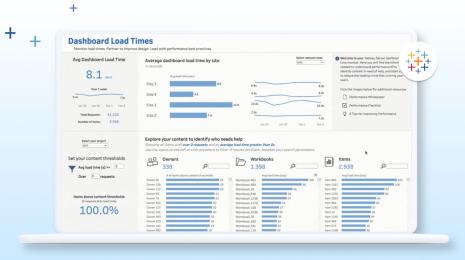Transform with trusted data: How good governance accelerates your Data Culture
There's a natural tension in many organizations around data governance. While IT recognizes its importance to ensure the responsible use of data, governance can often seem like a hindrance to organizational agility. But business intelligence models have evolved beyond centralized, linear processes—it's time to leave behind historic notions of governance as restrictive and embrace a flexible governance framework that enables enterprise transformation.
This summer, we spoke with Pierre Guillaume (“PG”) Wielezynski, Chief of Digital Transformation Services at the World Food Programme, which has had a longstanding partnership with Tableau, starting in 2015. We talked about the organization’s data governance efforts. “Five years ago, the IT department in the World Food Programme was very much seen as a team there to keep the lights on," PG told us. "It's been an incremental approach to transform our approach toward data. There were a lot of siloed data efforts, and there was no function in the organization responsible for making data useful and actionable. Because there was that vacuum, we in IT decided that we needed to play a role."
Our customers in every industry and region share these challenges, and the rapid evolution of IT landscapes in the past year and half has only added to the hurdles. However, we're also seeing organizations successfully deliver self-service analytics at scale with a flexible governance framework that creates trust and confidence in their data and analytics.

A holistic, step-by-step approach to governance that enables impactful insights
At Tableau, we define governance as the combination of controls, roles, and repeatable processes that ensure the responsible use of data across an organization. To shift toward self-service analytics in a trusted environment, an organization's governance framework must start with strategy-setting (from change management to KPIs) and iterate through execution and reevaluation (monitoring, tracking, updating).
Our approach, the Tableau Blueprint, combines years of expertise and best practices from thousands of customer implementations into a step-by-step methodology that enterprises can adopt and adapt with their changing requirements. This framework helps formalize the questions to ask and clearly outlines the steps you can take to improve your organization's data strategy across governance, agility, proficiency, and community.
Blueprint is successful because it offers a holistic approach to governance that helps businesses transform their Data Culture. A few of our critical beliefs and principles that make this approach unique include:
- Governance and self-service are not at odds: When people are empowered to access, analyze, and trust organizational data for decision-making, they'll drive powerful outcomes.
- IT and the business need to work together: With the right people involved in the governance framework, IT can deliver the right systems and processes that help people across the organization make decisions quickly in a secure, trusted environment.
- Quick wins and iteration are key: Governance can seem onerous, but it needn’t be. Start small, go for quick wins, build executive support, and prove the value for your organization. This helps you adapt to evolving needs and creates a snowball effect of impact.
Governance is foundational to data leadership
With the right approach, governance establishes organizational goals and norms for IT oversight of trusted data. Governance also empowers people across teams to self-serve their analytics needs securely. Ultimately, when teams across the business can access the data they need and act with confidence, you create a more resilient organization through an organizational culture fueled by its commitment to—and trust in—data.
"We have an understanding of the situation around us as expressed through data because we have invested in its availability, reliability, literacy, and quality," PG said. "We have a much better understanding of population movement and our supply chain situation than ever before. It’s a very different and much more effective and targeted way of tackling emergency response now that we have invested in these capabilities."
Please note: World Food Programme does not endorse any product or service.
Want to learn more about Tableau Blueprint?
Watch on-demand sessions from our Virtual IT Summit, including a discussion with PG at the World Food Programme, plus a customer roundtable on governance. If you're ready to get started with Tableau Blueprint, go ahead and take our quick Blueprint Assessment today.
Plus, watch this interview with IDG’s Enterprise Consulting Director, John Gallant, and former Tableau VP of Engineering for Data Management, Zaheera Valani:
Editor’s note: This article originally appeared on CIO.com.
This is the second post in a three-part series about data and analytics governance. In case you missed it, read the first post to hear from Tableau’s own data governance team.









